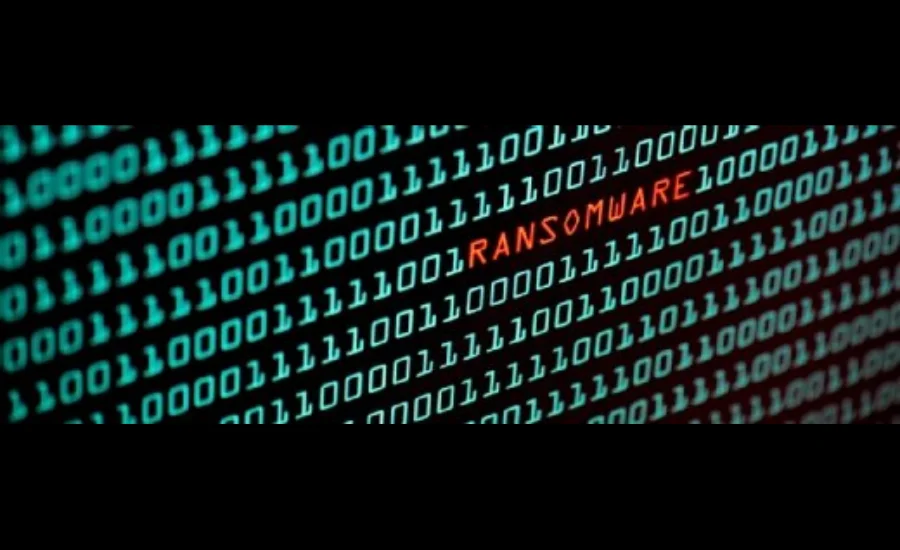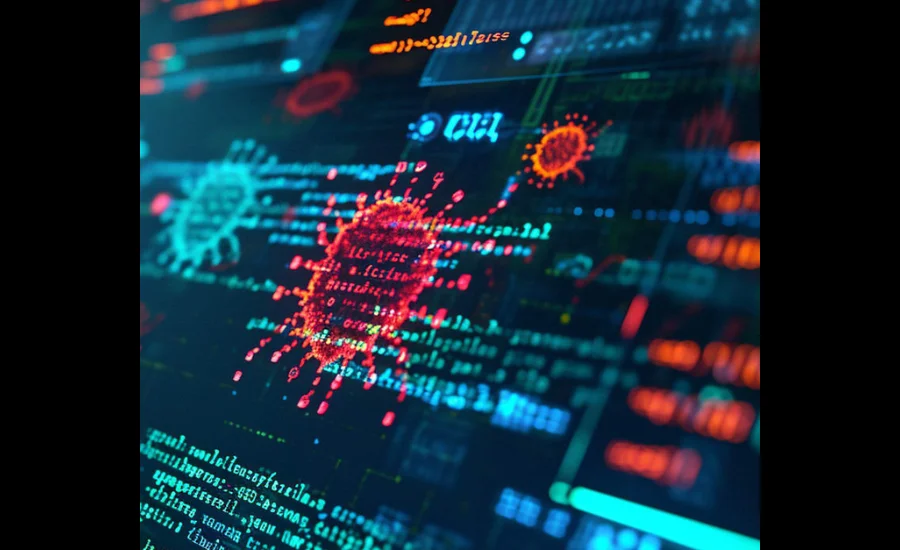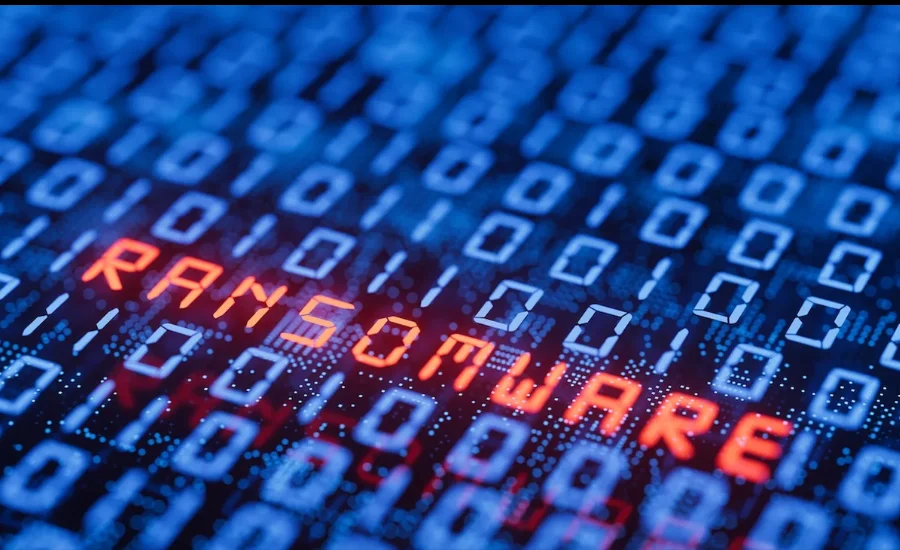Chainalysis 110m lockbit ilascu bleepingcomputer: Insights from BleepingComputer
Chainalysis 110m lockbit ilascu bleepingcomputer, In recent years, the prevalence of ransomware attacks has surged, becoming one of the most serious threats in the field of cybersecurity. Among the many cybercriminal syndicates operating today, LockBit stands out as one of the most notorious and destructive. Known for its sophisticated Ransomware-as-a-Service (RaaS) model, LockBit has successfully targeted industries and government entities across the globe, causing extensive financial and reputational damage.
One of the most alarming examples of LockBit’s impact was the $110 million ransomware attack, which highlighted the group’s dangerous capabilities. The incident not only showcased their technical proficiency but also underscored the growing risks posed by ransomware groups in today’s digital landscape.
The unraveling of LockBit’s operations has been a multi-faceted effort, involving cybersecurity companies, blockchain analysts, and investigative journalists. Key players like Chainalysis, BleepingComputer, and experts such as Ilascu have been instrumental in tracking the flow of stolen funds and identifying the dark web infrastructure supporting these attacks. Their efforts have been crucial in disrupting LockBit’s operations and exposing the group’s illegal activities.
By analyzing blockchain transactions and leveraging advanced investigative techniques, these experts have been able to trace the money trail, shed light on the syndicate’s tactics, and provide vital insights into the functioning of the group. This collaborative approach is helping to tighten the net around one of the most active and dangerous cybercrime operations in recent years.
Understanding LockBit’s Ransomware Ecosystem
LockBit has risen to prominence as one of the most notorious and effective ransomware groups in recent years. Its operations have evolved beyond traditional ransomware tactics, using an innovative approach known as Ransomware-as-a-Service (RaaS). This model allows LockBit to scale its attacks globally without needing to directly execute each individual cyberattack. Instead, LockBit provides ransomware tools and infrastructure to a network of affiliates who carry out the attacks. In exchange, these affiliates share a portion of the ransom payments with LockBit.
The RaaS model has several advantages. For one, it allows LockBit to focus on its core strengths—developing sophisticated ransomware and constantly evolving its technical capabilities—while affiliates handle the more operational aspects of the attack, including system intrusions, data encryption, and ransom negotiations. This decentralized model allows the group to extend its reach globally, targeting organizations across various sectors such as healthcare, manufacturing, finance, and government.
This shift in how ransomware groups operate has made them harder to dismantle. By outsourcing most of the work, LockBit has created a network of independent criminals, many of whom are situated across different regions, making it difficult for law enforcement to track down the core members. Furthermore, the group has developed mechanisms to obscure its activities and make attribution harder. For cybersecurity professionals and law enforcement alike, this presents a significant challenge in understanding and responding to the threat.
LockBit’s $110 Million Attack: A Stark Reminder
LockBit’s most publicized attack—one that demanded $110 million in ransom—has drawn significant attention from the cybersecurity community and beyond. This large-scale attack is not only a demonstration of the financial harm ransomware groups can cause but also an example of the sophisticated techniques employed by LockBit to target various organizations.
What set this attack apart was its scale and the vulnerability exploitation across multiple industries. LockBit demonstrated its ability to breach high-value sectors, including healthcare institutions, financial services, and critical infrastructure. These industries are particularly vulnerable due to the reliance on legacy systems and, in many cases, a lack of adequate security measures. The $110 million ransom demand was not just a reflection of the group’s technical capabilities but also an indication of the severe consequences of ransomware on modern businesses and institutions.
Beyond the immediate financial impact of the attack, LockBit’s actions set a precedent for the severity of cybercriminal activity. The demand for such an astronomical sum marked a new era for ransomware attacks—one where not only is the data encrypted, but the disruption of entire organizations is used as leverage to secure massive payouts. The event underscored the critical importance of investing in robust cybersecurity defenses, as organizations that are unable to secure their networks become prime targets for future attacks.
The public fallout from the $110 million attack has galvanized cybersecurity professionals and law enforcement agencies to prioritize ransomware response. This includes improving defenses against common attack vectors, such as phishing campaigns, and responding quickly when a breach is detected. The nature of this attack reinforced the reality that ransomware is not just a financial threat but a destabilizing force that can have far-reaching social and operational consequences.
Tracing the Money: The Role of Blockchain Analysis

The financial ecosystem of ransomware operations is one of the most vital areas of investigation when attempting to dismantle a cybercrime network. Blockchain analysis, which focuses on tracking cryptocurrency transactions, has become an essential tool in understanding the financial mechanics of ransomware groups. Chainalysis, a leader in blockchain forensics, has played a pivotal role in uncovering the money trail behind LockBit’s attacks.
Ransom payments are often made using cryptocurrencies like Bitcoin, which are valued for their pseudonymous nature. While these transactions are not entirely untraceable, they can be difficult to follow due to the sheer complexity of the blockchain. However, by using advanced tracking tools, organizations like Chainalysis are able to trace the movement of funds through a web of digital wallets and exchanges. These transactions often follow a path designed to obscure the ultimate destination, with ransom payments broken down and moved across multiple wallets to further mask the origin and recipient.
In the case of LockBit’s $110 million attack, Chainalysis was able to identify the digital wallets used to funnel the ransom payments. By following these funds, investigators could not only identify specific individuals or groups involved but also uncover links to other ransomware operations. This tracing process was crucial in mapping out LockBit’s financial architecture, revealing the extent to which the group relies on cryptocurrency exchanges to launder its illicit funds.
Blockchain analytics also provide investigators with a unique advantage by offering a transparent ledger that records every transaction. This visibility allows authorities to detect patterns, track trends, and piece together the financial networks supporting ransomware operations. The information provided by blockchain analysis has led to critical actions, such as asset seizures and takedowns of ransomware infrastructure, contributing to the overall disruption of the group’s operations.
Unveiling LockBit’s Dark Web Operations
While the technical aspects of ransomware are often discussed in terms of encryption and digital forensics, one of the most crucial components of LockBit’s operations lies in its dark web presence. Ransomware groups, including LockBit, operate in the shadows of the internet, using encrypted websites to communicate with victims, negotiate ransoms, and leak stolen data.
LockBit’s dark web operations have been well-documented by cybersecurity platforms such as BleepingComputer, which has tracked the group’s activities across underground forums and sites dedicated to ransomware negotiations. The group’s reliance on the dark web allows it to maintain anonymity, ensuring that its communications and transactions are hidden from law enforcement and the public eye.
Ransomware groups like LockBit also use the dark web to advertise their services. They offer their RaaS platform to other cybercriminals looking to carry out attacks without developing the technical expertise themselves. Through dark web forums, LockBit recruits affiliates and provides them with the tools necessary to conduct ransomware campaigns. This hidden economy has allowed the group to scale its operations rapidly, while maintaining plausible deniability for individual attacks.
Additionally, the dark web serves as a platform for data extortion. In cases where victims refuse to pay the ransom, LockBit often uploads stolen files to its dark web sites, threatening to publicly release sensitive information unless the ransom is paid. This tactic not only increases the pressure on victims to comply but also creates additional avenues of financial gain for the group.
Collaboration: The Key to Combating Cybercrime

Combating ransomware groups like LockBit requires a collaborative approach that involves cybersecurity firms, law enforcement agencies, financial institutions, and even the general public. No single entity has the resources or expertise to tackle this threat on its own. The success of operations such as Operation Cronos—the takedown of LockBit’s infrastructure—demonstrates the importance of a coordinated effort across national borders.
Organizations like Chainalysis, BleepingComputer, and independent cybersecurity researchers have played critical roles in uncovering the tactics and financial structures of ransomware groups. Their findings have provided law enforcement with the intelligence necessary to take action, whether it’s identifying wallets involved in ransom payments or uncovering critical infrastructure supporting ransomware campaigns.
International law enforcement agencies, including the FBI, Europol, and agencies in the U.K., have also been pivotal in investigating ransomware attacks. Through joint operations, these agencies have been able to pool resources and share intelligence, enabling them to track ransomware operations across jurisdictions. As ransomware groups often operate from countries with limited cybersecurity enforcement, international cooperation is essential in holding them accountable.
LockBit’s RaaS Model: A Growing Threat
LockBit’s use of the RaaS model has revolutionized the ransomware landscape. It has lowered the barriers to entry for cybercriminals and made it easier for anyone with the right resources to launch an attack. This has led to an explosion of ransomware campaigns targeting organizations across the globe. By providing a platform for other cybercriminals, LockBit has been able to scale its operations without directly engaging in every attack.
The RaaS model also provides LockBit with a level of deniability, as it can claim that the attacks were carried out by affiliates who used the platform. This has allowed the group to distance itself from some of the criminal activities, making it harder for authorities to track down the key players.
The Financial Impact of LockBit’s Attacks
LockBit’s ransomware attacks come at a high financial cost to organizations. While the ransom itself is often the most visible financial impact, the total cost of an attack is far greater. Organizations must contend with downtime, lost productivity, data recovery costs, and the potential long-term damage to their reputation. The cost of paying the ransom is only a small part of the equation, as companies must also invest heavily in rebuilding their infrastructure and fortifying their cybersecurity defenses to prevent future attacks.
For many businesses, a ransomware attack can lead to significant operational disruptions. Industries such as healthcare, which rely on real-time access to patient data, are particularly vulnerable to the crippling effects of ransomware. Data loss or unavailability can result in delayed treatments, compromised patient care, and, in extreme cases, loss of life. The financial burden placed on these organizations is immense, but the societal cost can be even more devastating.
The Challenges of Investigating Ransomware

Cryptocurrency payments are often used as a means of obfuscating financial transactions, and tracking the movement of funds requires highly specialized tools and expertise. Blockchain analysis can trace these transactions, but identifying the individuals behind the wallets is often difficult, especially when cybercriminals use techniques like mixing and tumbling to hide their tracks.
International cooperation is also a challenge in ransomware investigations. Cybercriminals often operate across borders, exploiting jurisdictions with weak cybersecurity laws or limited law enforcement resources. This makes it essential for authorities to work together, share intelligence, and coordinate efforts to dismantle ransomware networks.
A Turning Point in the Fight Against LockBit
Operation Cronos, a major international operation aimed at dismantling ransomware groups like LockBit, marked a turning point in the fight against ransomware. By targeting the infrastructure that supports these groups, law enforcement agencies were able to disrupt their operations, seize assets, and identify key players in the network. While this operation did not completely dismantle LockBit, it delivered a significant blow to its operations.
This operation highlighted the importance of continued collaboration and the need for a multifaceted approach in combating ransomware. Efforts to disrupt ransomware operations are likely to continue to evolve, with greater focus on technological advancements, legal frameworks, and international cooperation.
The Future of Ransomware and Cybersecurity

As ransomware attacks continue to evolve, experts agree that the fight against cybercrime must remain proactive. Cybercriminals are quick to adopt new tools, techniques, and methods of attack, making it crucial for organizations to stay ahead of the curve. Advances in blockchain analytics, machine learning, and artificial intelligence will continue to play a key role in identifying and disrupting ransomware groups.
Ultimately, the future of cybersecurity relies on a collective response from all sectors of society. Organizations must invest in proactive defenses, educate their employees about cybersecurity best practices, and implement robust incident response plans. By continuing to strengthen cybersecurity defenses and collaborate globally, experts believe that groups like LockBit can be thwarted in their efforts to cause widespread damage.
Also Read: Phongsavanh Group Phishing Scam
Final Words
The $110 million ransomware attack by LockBit underscores the escalating threat posed by sophisticated ransomware groups. Leveraging a Ransomware-as-a-Service (RaaS) model, LockBit enables affiliates to execute global attacks, targeting critical sectors such as healthcare and finance. This decentralized approach complicates efforts to dismantle the group, as it operates through a network of independent actors.
Key players like Chainalysis, BleepingComputer, and cybersecurity expert Ilascu have been instrumental in tracking LockBit’s activities. Chainalysis uses blockchain analytics to trace cryptocurrency transactions, unraveling the financial networks underpinning these operations. BleepingComputer and other platforms expose LockBit’s dark web infrastructure, where ransom negotiations and data extortion occur.
Collaboration among cybersecurity firms, law enforcement, and investigative journalists is vital in countering ransomware. High-profile operations like Operation Cronos demonstrate the importance of disrupting ransomware ecosystems. Moving forward, a proactive, collective approach, leveraging cutting-edge technologies and international cooperation, is essential to mitigate the devastating impact of ransomware attacks.
Stay informed and secure with Lep Bound, where we bring you the latest insights on cybersecurity threats and the fight against cybercrime.






